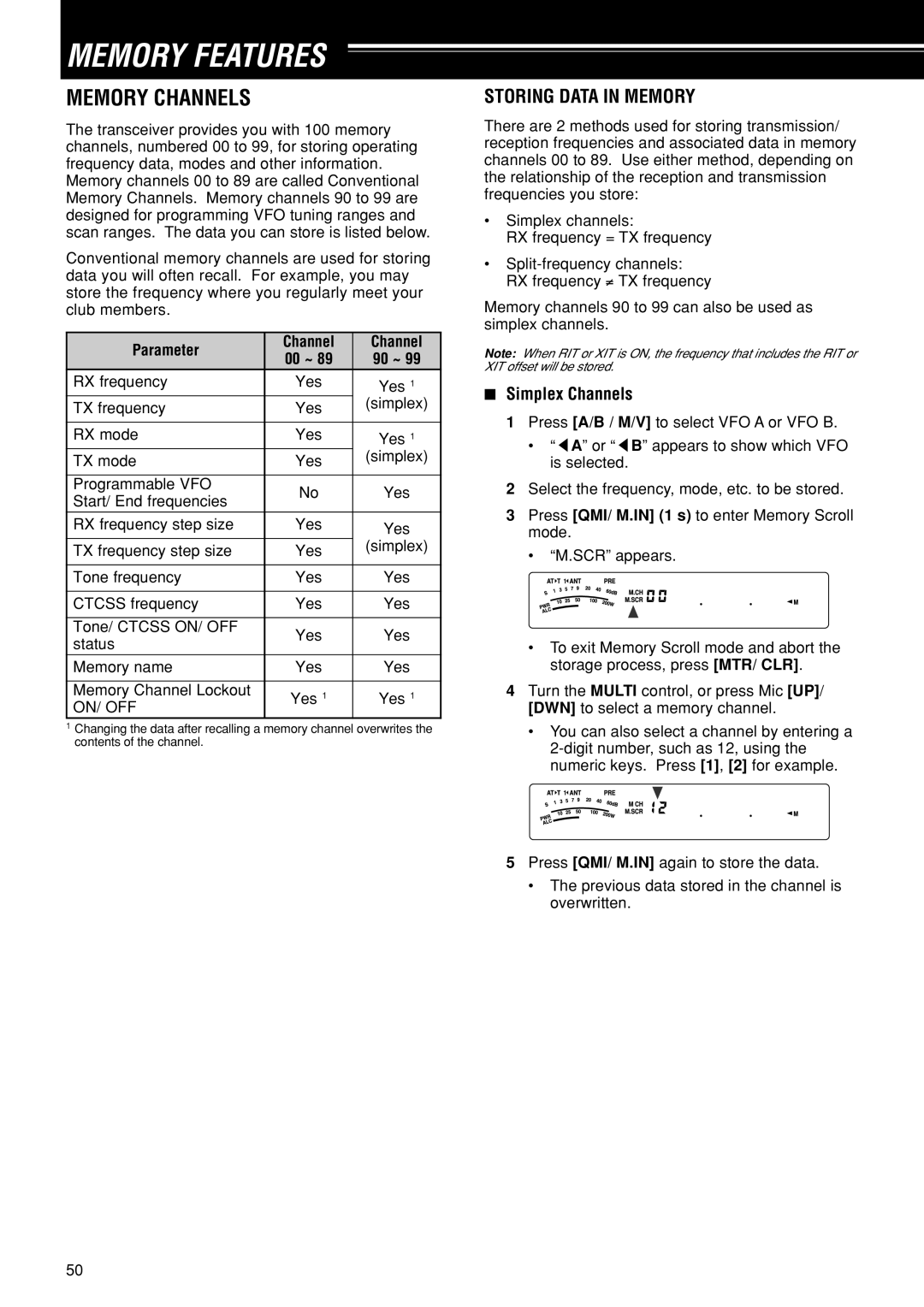
MEMORY FEATURES
MEMORY CHANNELS
The transceiver provides you with 100 memory channels, numbered 00 to 99, for storing operating frequency data, modes and other information. Memory channels 00 to 89 are called Conventional Memory Channels. Memory channels 90 to 99 are designed for programming VFO tuning ranges and scan ranges. The data you can store is listed below.
Conventional memory channels are used for storing data you will often recall. For example, you may store the frequency where you regularly meet your club members.
Parameter | Channel | Channel | |
00 ~ 89 | 90 ~ 99 | ||
| |||
RX frequency | Yes | Yes 1 | |
TX frequency | Yes | (simplex) | |
| |||
|
|
| |
RX mode | Yes | Yes 1 | |
TX mode | Yes | (simplex) | |
| |||
|
|
| |
Programmable VFO | No | Yes | |
Start/ End frequencies | |||
|
| ||
|
|
| |
RX frequency step size | Yes | Yes | |
TX frequency step size | Yes | (simplex) | |
| |||
|
|
| |
Tone frequency | Yes | Yes | |
|
|
| |
CTCSS frequency | Yes | Yes | |
|
|
| |
Tone/ CTCSS ON/ OFF | Yes | Yes | |
status | |||
|
| ||
Memory name | Yes | Yes | |
|
|
| |
Memory Channel Lockout | Yes 1 | Yes 1 | |
ON/ OFF | |||
|
|
1Changing the data after recalling a memory channel overwrites the contents of the channel.
STORING DATA IN MEMORY
There are 2 methods used for storing transmission/ reception frequencies and associated data in memory channels 00 to 89. Use either method, depending on the relationship of the reception and transmission frequencies you store:
•Simplex channels:
RX frequency = TX frequency
•
Memory channels 90 to 99 can also be used as simplex channels.
Note: When RIT or XIT is ON, the frequency that includes the RIT or XIT offset will be stored.
■Simplex Channels
1Press [A/B / M/V] to select VFO A or VFO B.
•“tA” or “tB” appears to show which VFO is selected.
2Select the frequency, mode, etc. to be stored.
3Press [QMI/ M.IN] (1 s) to enter Memory Scroll mode.
•“M.SCR” appears.
•To exit Memory Scroll mode and abort the storage process, press [MTR/ CLR].
4Turn the MULTI control, or press Mic [UP]/ [DWN] to select a memory channel.
•You can also select a channel by entering a
5Press [QMI/ M.IN] again to store the data.
•The previous data stored in the channel is overwritten.
50
